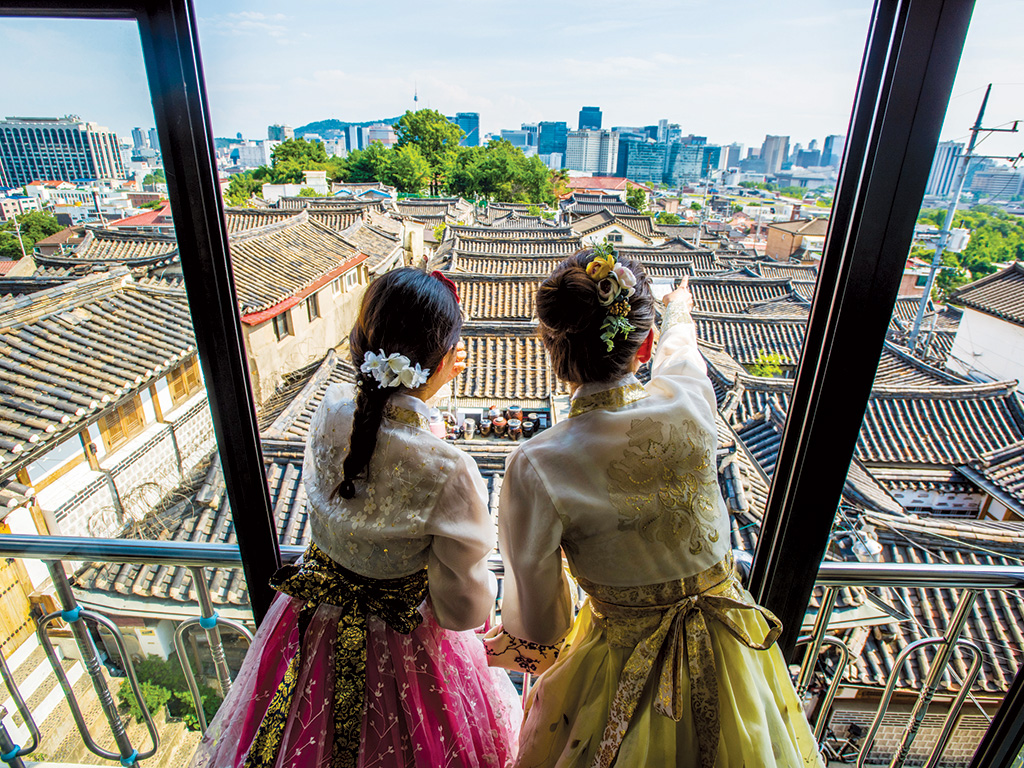SOUTH KOREA offers a wealth of traditional marketplaces dotted around the country, from the coastal metropolis of Busan and the city of Daegu to capital Seoul’s oldest retail haven.




Effortlessly blending rich cultural history with modern acumen, these thriving commercial centres have endured the test of time and remain fundamental to Korean society today.
Korea’s traditional marketplaces are a hit with travellers the world over, thanks to the sheer variety of food on offer at a fraction of the price you would pay in a restaurant.
Here are some of the top five most popular traditional markets in Korea:
1. Jagalchi Fish Market, Busan: Situated in the vibrant coastal city of Busan, Jagalchi Fish Market is a feast for the senses. Visitors can witness the lively auctions where fishermen sell their fresh catches of the day. After exploring the market, visitors can wander to see Yongdusan Park and come back savour the taste of the sea by indulging in a mouthwatering feast trying dishes such as Yubu Jeongol (Spicy Tofu Stew), Dangmyeon Guksu (Sweet Potato Noodles)
2. Tongin Market, Seoul: Tongin Market, located in the historic neighbourhood of Seochon in Seoul, is a beloved destination for both locals and tourists. What sets Tongin Market apart is its unique “Dosirak Café” system. Visitors purchase a tray and a set of old traditional coins, which they can use to select a variety of dishes from different vendors. This innovative concept allows visitors to create their own traditional Korean lunchboxes. With an assortment of dishes ranging from bibimbap to mandu (dumplings), Tongin Market provides an interactive and nostalgic dining experience and right after that you can take a walk to see Gyeongbokgung Palace and Cheonggye Square.
3. Namdaemun Market, Seoul: Namdaemun Market is one of the largest and oldest traditional markets in Seoul, with a history dating back over 600 years. It is a paradise for bargain hunters, offering a wide range of goods. Visitors can immerse themselves in the vibrant atmosphere and haggle with friendly vendors to find unique treasures and it’s a place that offers a foreigner-only Community Lounge. The market also features numerous food stalls and restaurants where visitors can indulge in local street food like kalguksu (handmade knife-cut noodle soup) and it is a perfect ending for your night to walk over to explore the vibrant Myeongdong area just by it.
4. Seomun Market, Daegu: Located in the city of Daegu, Seomun Market is one of the largest traditional markets in Korea’s southeastern region. With a history spanning over 100 years, it showcases the cultural heritage and culinary delights of the area. Visitors can explore the maze-like alleys lined with shops selling traditional crafts, and local specialties such as Daegu’s famous apples and honey. The market is also renowned for its food street, where visitors can savor mouthwatering dishes such as jjimgalbi (braised beef ribs) and napjak mandu, and right after that go and explore the nearby Kim Gwang-seok Street.
5. Jeonju Hanok Village & Nambu Market, Jeonju: Jeonju, the birthplace of Korea’s traditional dish bibimbap, is famous for its Hanok Village and Nambu Market. The Hanok Village offers a picturesque setting with its beautifully preserved traditional Korean houses. Within the village, visitors can explore the Nambu Market, a vibrant marketplace that showcases the region’s unique local produce, handicrafts, and traditional snacks. Visitors can try Jeonju’s signature dishes like kongnamul gukbap (bean sprout soup with rice), and Jeonju-style kimbap. You can enjoy the Artisan Shop Cluster (Experience Stores) and the Night Market and Youth Mall and see Hanok Village and the Pungnammun Gate just around it.
These traditional marketplaces are excellent places to learn about Korean history and culture, while also getting a glimpse into how people live and work. The atmosphere of the markets is vibrant and energetic, and most of them are located close to other well-known tourist attractions, making them an excellent starting point of memorable journeys.
